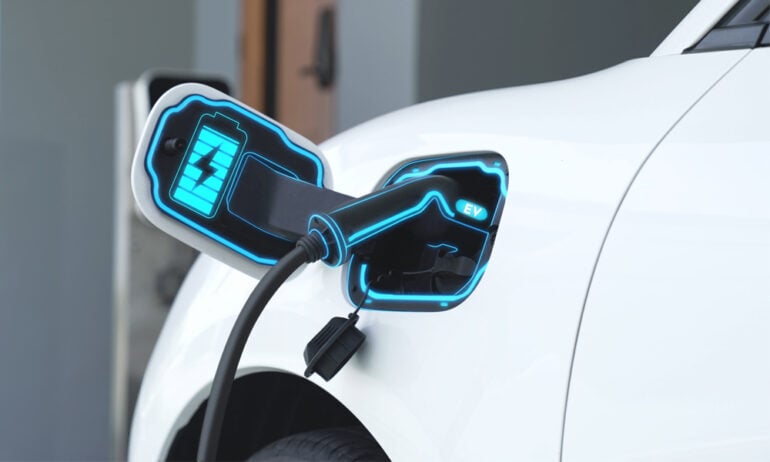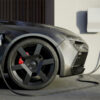According to the US Department of Energy, 80% of EV charging is done at home due to the convenience and cheaper electricity prices. If you’re looking to install an EV charger in your home, it’s important to know how much power it can deliver, which connector type to use, and whether you should install a hardwired or plug-in model. Here’s everything you need to know about how to choose the right EV charger for you, your home, your car, and your wallet.
Read More: EV charging guide
How To Choose the Right EV Charger: Power Output
When choosing a level 2 EV charger, one of the most important things to look at is its power output. Since all level 2 chargers carry 240V (volts), you just need to check the amperage (or current rating). Wall-mounted chargers usually carry up to 40-60 amps, which means they deliver 7.7-11.5 kilowatts (kW) of power.
Before you buy a level 2 charger, you need to know the power rating of your EV’s onboard charger. All EVs have a built-in onboard charger, which takes the alternating current (AC) running in your home and converts it into direct current (DC), which is necessary for charging your batteries.
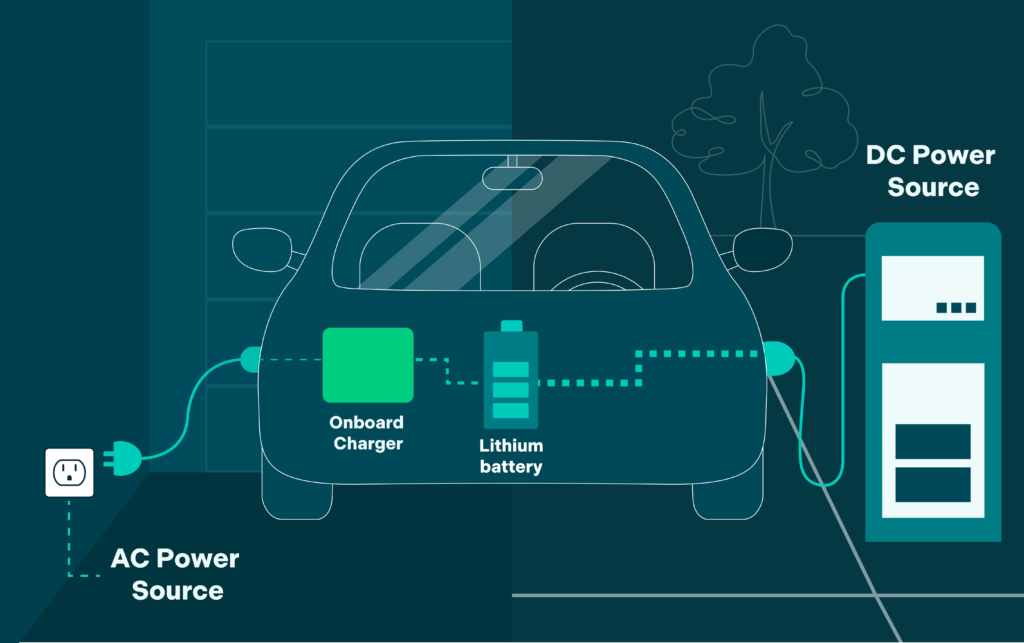
Knowing the power rating of your onboard charger will let you know how fast you can charge your EV at home. For the fastest charging speeds, you’ll want to install an EV charger that can deliver as much power as your onboard charger can receive. Otherwise, your onboard charger will be the limiting factor, and it will take longer to charge your EV.
Read More: How long does it take to charge an electric car?
What Is the 80% Rule?
When installing a level 2 EV charger in your home, you need to follow the 80% rule. The National Electrical Code says your electrical circuits can only reach 80% capacity of the circuit they are attached to. So, if you want to charge your EV at 48 amps, you’ll need a charger to be connected to a 60-amp circuit breaker.
You can get a maximum output of 80 amps from level 2 EV chargers, but most homes won’t have room for the 100-amp breaker that it requires.
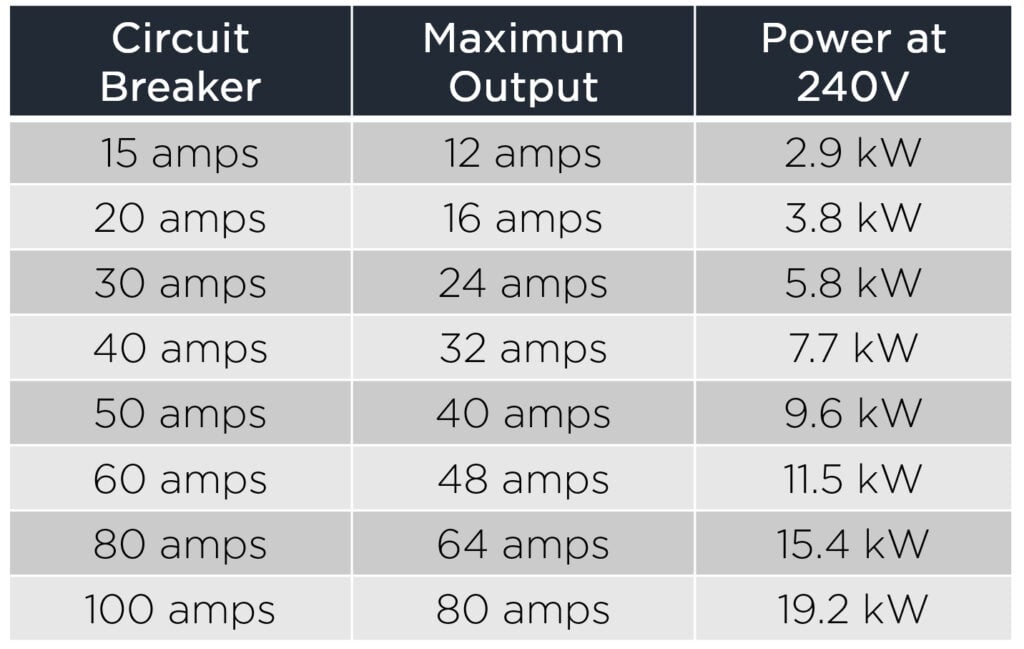
In the US, most residential homes built after 1970 will have an electric panel that supports at least 100 amps. If your home was built before 1970, there’s a chance it can only handle 60 amps or less. You can find 200-amp breakers in more modern homes, while a few very large homes support up to 400 amps.
Hardwired vs Plug-in vs Mobile EV Chargers
When installing a level 2 EV charger in your home, you have two main options: you can hardwire a wall mount directly to a circuit in your electric panel, or you can install a 240-volt outlet. A hardwired connector is faster and safer, while an outlet is easier and allows you to upgrade your charger later.
Hardwired EV Chargers
Hardwired EV chargers are safer simply because they have fewer connections. Removing an unnecessary cable means there is less chance of it getting frayed or shorting out. Most level 2 EV chargers also have GFCIs (ground fault circuit interrupters) built-in, which further protects against power failures.
Hardwiring your EV charger allows you to deliver more power and fill up your batteries faster. As long as your home’s electrical system can handle it, hardwired EV chargers can deliver 48 amps (11.5kW) or more, while NEMA outlets can only deliver up to 40 amps (9.6kW) or less.
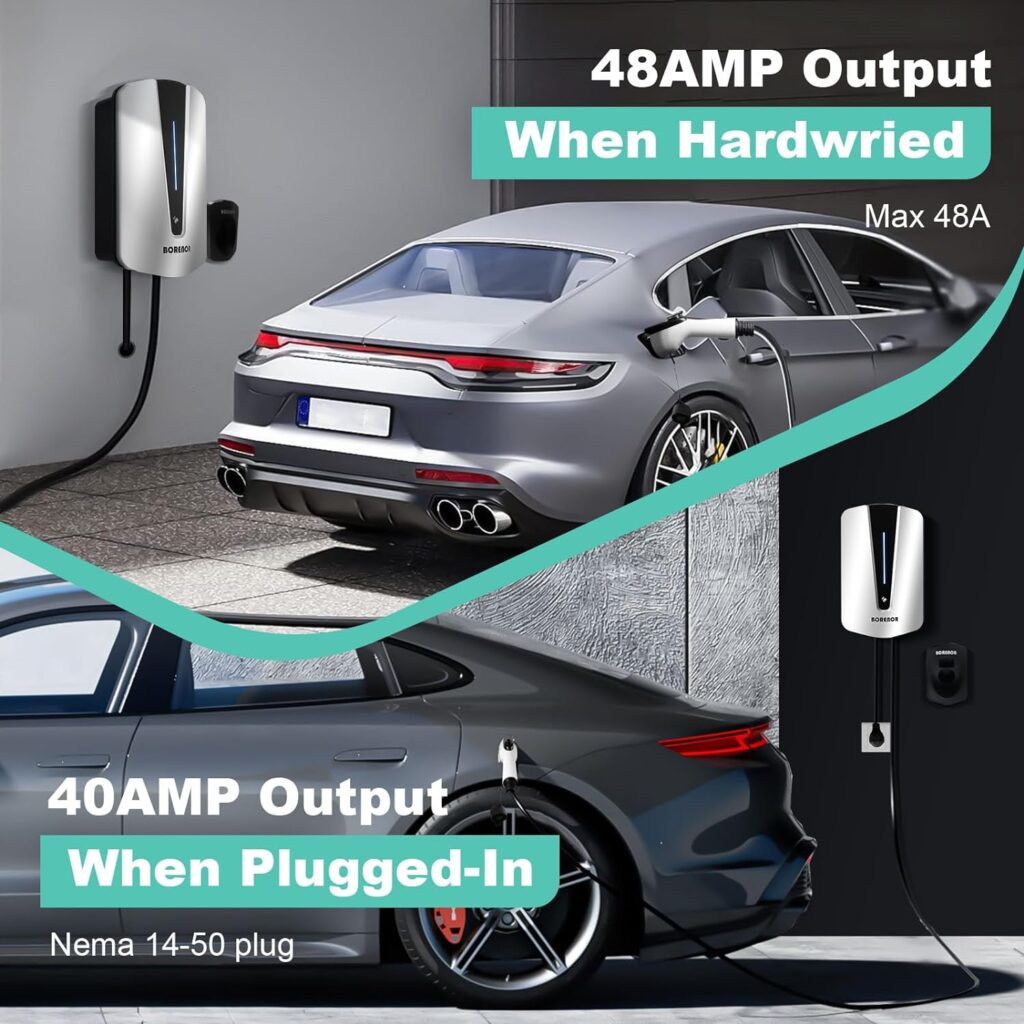
On the other hand, hardwiring an EV charger is a lot more difficult. You’ll need to hire an electrician to install a level 2 charger, and you’ll need to get permits and pay processing fees. You’ll also need to make sure you have at least one free breaker and that your electrical system can handle the amount of power an EV charger requires.
Plug-In EV Chargers
If you already have a 240V outlet in your garage, you might be able to plug an EV wall charger in and start using it without installing anything. However, you should still consult a professional electrician to make sure your home has enough power to support EV charging.
If you don’t already have a 240V outlet, you’ll need to install one before you can plug in your EV charger, but the installation can be just as expensive and complicated. One of the biggest problems with installing a 240V outlet and using a plug-in charger has to do with “nuisance tripping.”
What Is Nuisance Tripping?
The electrical code now requires GFCI breakers for all new 240v outlets, but most EV wall chargers already have GFCIs built-in. The problem is that having two GFCIs on the same circuit can cause them to trip each other. Many EV charger manufacturers state that their products should not be installed on circuits with GFCI protections.
So, if you install a level 2 wall charger and plug it into a 240V outlet, you either risk your system regularly tripping, or your electrical system won’t be in code, and it might not pass inspections in certain areas. Most wall-mounted EV chargers are designed to be either hardwired or plugged in, but there are some models that work with either configuration.
Mobile EV Chargers
If you don’t want to deal with a wall charger at all, you can plug your EV directly into a 240V outlet with a mobile connector. These cables are cheap and easy to use, but they don’t come with nearly as many features. Plus, some mobile connectors only work with 120V outlets, which will charge your EV much slower.
Read More: Level 1 vs level 2 EV charging
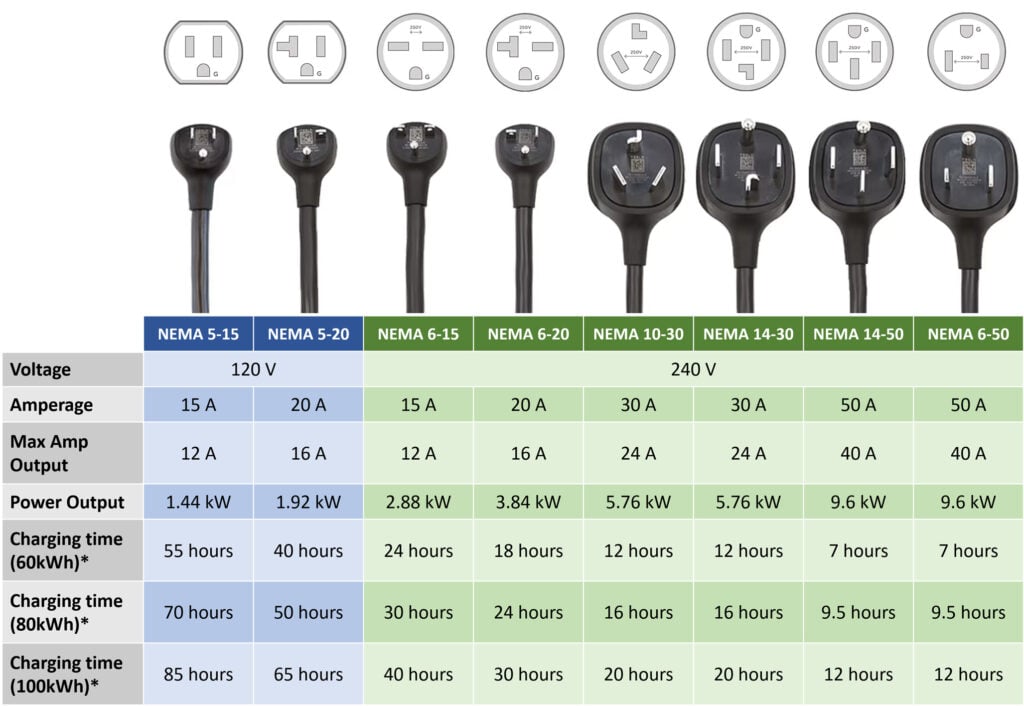
Without a wall charger, you might not be able to use a smartphone app to change the amperage output, create charging schedules, or monitor your energy use. All of these features can help you save a lot of energy and money in the long run, especially if you can get your EV to only charge when energy prices are low.
How To Choose the Right EV Charger: Power Sharing
If you have more than one EV at home, you might be able to connect multiple chargers to the same circuit. Check that your EV charger has “power sharing” to see if it can split the electricity from your circuit breaker between two chargers. However, this will often require a junction box to be installed in addition.
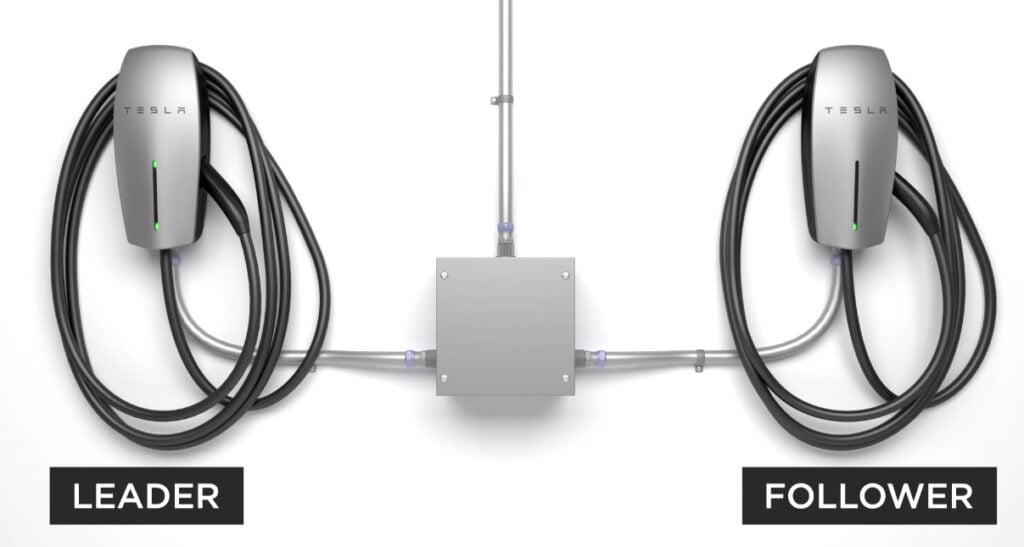
How to Choose the Right EV Charger: Connectors
Before you choose a level 2 charger for your home, make sure it’s compatible with the charging port on your EV. Most automakers currently use the SAE J1772 connector, except Teslas, which use an NACS connector. However, most major automakers will start adding NACS ports for all EVs made after 2025.
If you plan to buy a new EV after 2025, or you just want the ability to charge different EV models at home, there are universal wall chargers that work with both SAE J1772 and NACS ports. Then, you won’t need to use adapters to charge any EV.
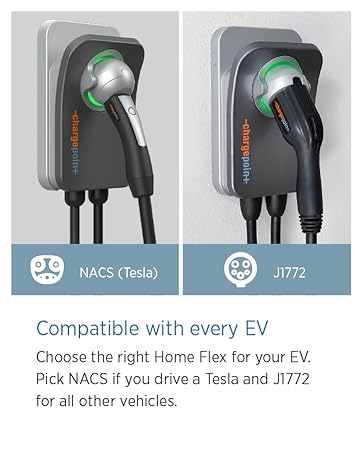
Read More: The best EV chargers to install in your home
How to Choose the Right EV Charger: Cable length
Depending on where you install an EV charger, you might need to choose one that has a long enough cable. It is not recommended to use extension cords or other cables to connect to your EV charger. Keep in mind which side your EV connector is on, and make sure the cable is clear from people tripping over it or driving over it.
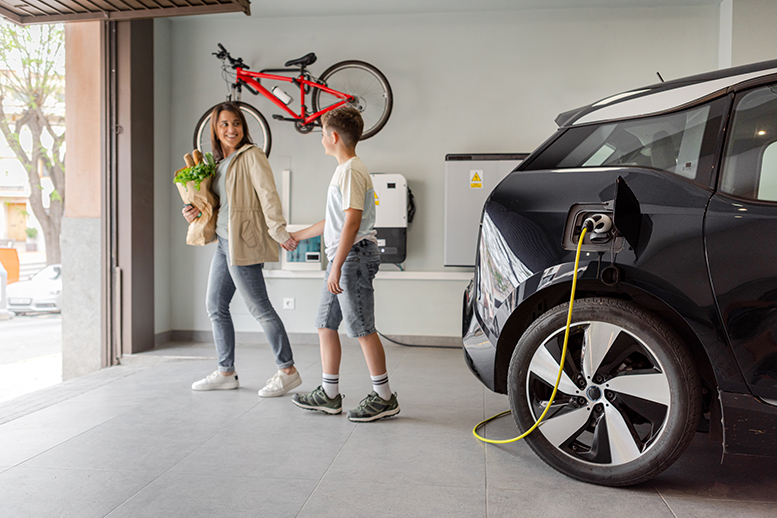
How to Choose the Right EV Charger: Weather-proof
If you plan to install an EV charger outside, it’s important to check the Ingress Protection (IP) rating to find out how water- and dust-proof it is. Ideally, you want to find an EV charger that is rated IP65 or higher. This means it will be totally “dust-proof” and protected against water at fairly high pressure.

How to Choose the Right EV Charger: Cost
You can find level 2 EV chargers for a few hundred dollars or over a thousand. Usually, the more you pay, the more features you’ll get, but you should be able to find a decent EV charger for around $500. However, the costs to install an EV charger, obtain the proper permits, and processing fees should cost you another $1,000 or more.
Read More: How much does it cost to charge an EV?
Depending on which type of EV charger you install, you could be eligible for certain rebates. In some cases, these rebates could even pay for the cost of the charger itself. However, the incentive programs vary from state to state and city to city, so you might want to talk to an electrician to find out how much you could potentially save.
If you need any help installing your EV charger, HelloTech can send an electrician to your door to give you a free quote. We can provide an in-home quote in as little as 15-30 minutes, and our technicians can schedule your installation within a week or two of the estimate.
